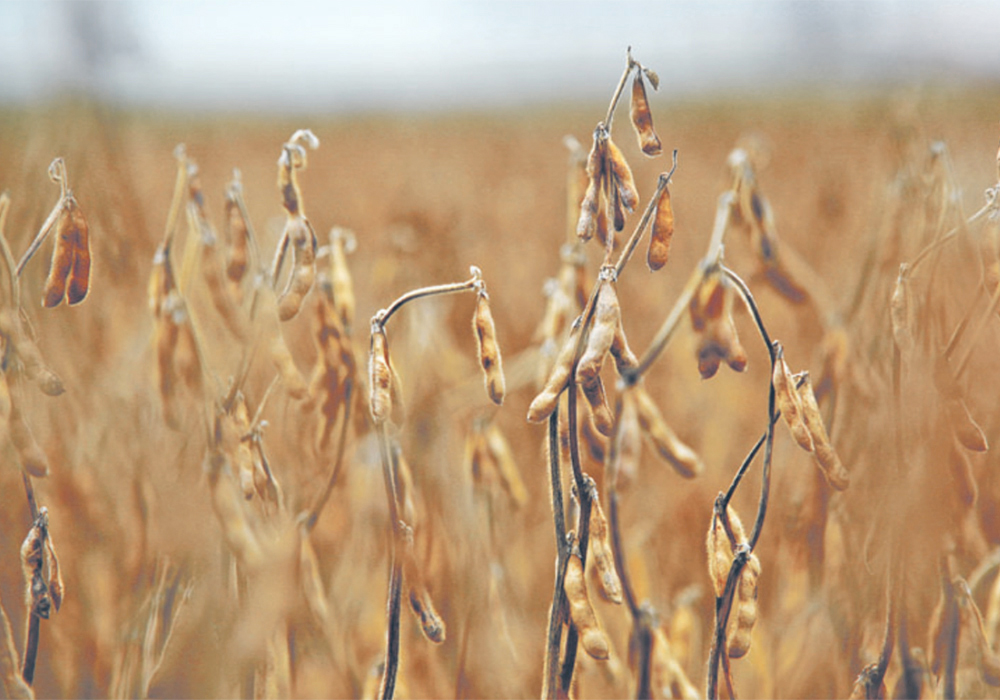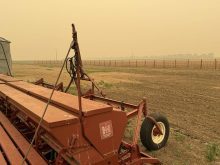After several years of sliding yields, growers hope for an average or above-average crop amid better growing conditions
The soybean harvest is just underway in Manitoba, but the yield potential looks much better than previous years.
Last year, the average soybean yield in the province was 27.1 bushels per acre. In 2019, it was slightly higher, at 27.7 bu. per acre.
Those yield numbers don’t generate a lot of enthusiasm but this fall’s harvest could revive grower interest in beans.
“I’m hopeful for an average or above-average crop in this area,” said Jeff Elder, who farms near Wawanesa, Man., and has been growing soybeans for about 10 years.
Read Also

Saskatchewan puts crown land auction on hold
Auctions of Saskatchewan crown lease land are once again on hold.
Above-average would be a yield of 40 to 50 bu. per acre, at least on his farm, Elder added.
“My soybean yields are often very comparable to my canola yields, if not a touch better.”
Elder decided to continue with soybeans despite a stretch of difficult years between 2017 and 2021.
Repeated droughts, excessive heat and lack of rains in early August, a critical period for pod fill, pushed soybean yields off a cliff in much of Manitoba. Farmers had grown accustomed to yields in the low to mid 40s, but the dry conditions pushed yields down to the 20s and low 30s.
Thanks to the poor yields, many growers abandoned the crop or cut back on production. Manitoba’s soybean acres went from 2.2 million in 2017 to an estimated 900,000 to 1.1 million acres in 2022.
This spring and summer provided much better growing conditions in Manitoba for soybeans, which prefer excess moisture to not enough moisture.
Only a fraction of the crop has been combined in the province, likely less than eight percent, but there is a potential for outstanding yields.
“Soybean crops are looking very promising,” said Jennifer McCombe-Theroux, production specialist with Manitoba Pulse and Soybean Growers in eastern Manitoba.
Many soybean fields have a high number of pods per plant and seeds in each pod, the basic ingredients to produce strong yields.
“I think a lot of farmers are looking at their soybean crops and are really excited,” she added.
Much of Manitoba was exceptionally wet in spring, so many farmers delayed seeding and about 700,000 acres of cropland were abandoned.
But soybeans can tolerate more moisture early in the growing season than other crops and August rains helped with pod fill.
Soybeans were seeded later than usual but the risk of frost damage is now minimal because much of the crop is in the R6 to R8 stage as of the third week in September.
Elder’s soybean crop has matured rapidly and should be ready for combining soon.
He has some remaining wheat to harvest and the canola is ready to go, but “the soybeans, the way they are ripening so fast… we could be into them first,” he said.
Yields in the 40s or 50s this fall should rejuvenate grower interest in soybeans, but an acreage boom is unlikely in 2023.
From 2015 to 2017, soybean acres jumped from 1.4 million to 2.3 million acres as hundreds of new growers tried the crop for the first time.
The excitement didn’t last. Many farmers reported yields of 15 to 20 bu. per acre in 2017 and subsequent years because of drought and no rain in August.
Darren Nykoliation, market development manager for corn and soybeans with Canterra Seeds, said many growers remain wary of soybeans.
“If this year does pan out to be a decent outcome… it’s not going to, all of sudden, drive guys into a huge increase in acres going into 2023,” he said.
“Obviously, if it’s a historical soybean grower, they’re going to look at it as a viable option for their rotation. (Maybe) an increased fashion, going into next year…. (But) I still believe soybeans still have a risk factor for a lot of guys, who aren’t willing to take that risk.”
Of course, much depends on the price of soybeans this winter and weather conditions going into the spring of 2023.
But some growers may think about growing soybeans again because they’re a nice option for those looking to diversify their crop rotation.
“People are going to be looking at their options. And there are new varieties and traits of soybeans, every year, that will maybe suit more areas and situations,” Elder said.
“The further away you can get from a canola-wheat rotation, the better off you’ll be in the long run.”


















